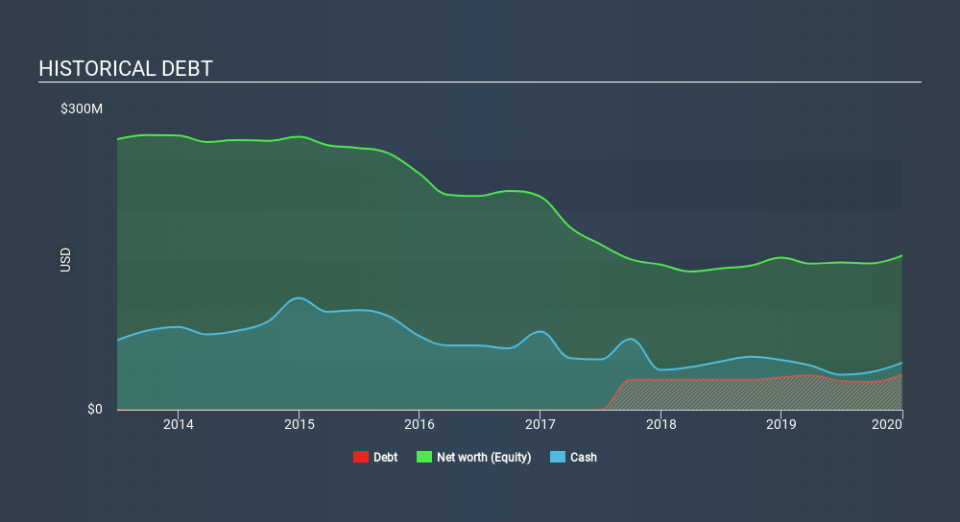Is Calix (NYSE:CALX) A Risky Investment?

Warren Buffett famously said, 'Volatility is far from synonymous with risk.' It's only natural to consider a company's balance sheet when you examine how risky it is, since debt is often involved when a business collapses. Importantly, Calix, Inc. (NYSE:CALX) does carry debt. But is this debt a concern to shareholders?
Why Does Debt Bring Risk?
Debt and other liabilities become risky for a business when it cannot easily fulfill those obligations, either with free cash flow or by raising capital at an attractive price. In the worst case scenario, a company can go bankrupt if it cannot pay its creditors. While that is not too common, we often do see indebted companies permanently diluting shareholders because lenders force them to raise capital at a distressed price. Of course, debt can be an important tool in businesses, particularly capital heavy businesses. When we think about a company's use of debt, we first look at cash and debt together.
Check out our latest analysis for Calix
What Is Calix's Net Debt?
You can click the graphic below for the historical numbers, but it shows that as of December 2019 Calix had US$35.0m of debt, an increase on US$32.4m, over one year. However, it does have US$46.8m in cash offsetting this, leading to net cash of US$11.8m.
How Healthy Is Calix's Balance Sheet?
According to the last reported balance sheet, Calix had liabilities of US$115.5m due within 12 months, and liabilities of US$47.3m due beyond 12 months. Offsetting these obligations, it had cash of US$46.8m as well as receivables valued at US$46.5m due within 12 months. So its liabilities outweigh the sum of its cash and (near-term) receivables by US$69.5m.
Of course, Calix has a market capitalization of US$429.3m, so these liabilities are probably manageable. But there are sufficient liabilities that we would certainly recommend shareholders continue to monitor the balance sheet, going forward. While it does have liabilities worth noting, Calix also has more cash than debt, so we're pretty confident it can manage its debt safely. The balance sheet is clearly the area to focus on when you are analysing debt. But ultimately the future profitability of the business will decide if Calix can strengthen its balance sheet over time. So if you want to see what the professionals think, you might find this free report on analyst profit forecasts to be interesting.
Over 12 months, Calix made a loss at the EBIT level, and saw its revenue drop to US$424m, which is a fall of 3.9%. We would much prefer see growth.
So How Risky Is Calix?
By their very nature companies that are losing money are more risky than those with a long history of profitability. And in the last year Calix had negative earnings before interest and tax (EBIT), truth be told. And over the same period it saw negative free cash outflow of US$8.7m and booked a US$18m accounting loss. But the saving grace is the US$11.8m on the balance sheet. That kitty means the company can keep spending for growth for at least two years, at current rates. Summing up, we're a little skeptical of this one, as it seems fairly risky in the absence of free cashflow. The balance sheet is clearly the area to focus on when you are analysing debt. However, not all investment risk resides within the balance sheet - far from it. Take risks, for example - Calix has 4 warning signs (and 1 which is potentially serious) we think you should know about.
When all is said and done, sometimes its easier to focus on companies that don't even need debt. Readers can access a list of growth stocks with zero net debt 100% free, right now.
If you spot an error that warrants correction, please contact the editor at editorial-team@simplywallst.com. This article by Simply Wall St is general in nature. It does not constitute a recommendation to buy or sell any stock, and does not take account of your objectives, or your financial situation. Simply Wall St has no position in the stocks mentioned.
We aim to bring you long-term focused research analysis driven by fundamental data. Note that our analysis may not factor in the latest price-sensitive company announcements or qualitative material. Thank you for reading.


